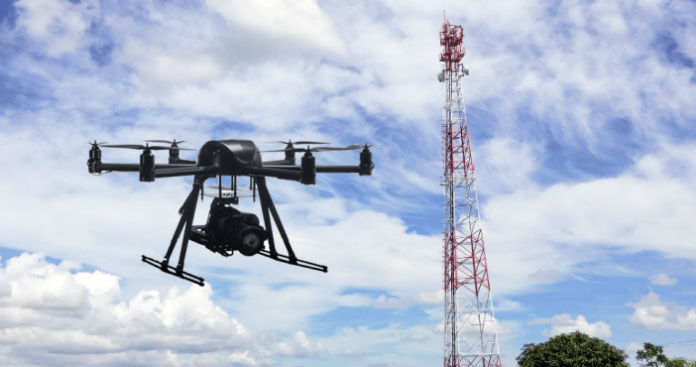Unmanned aerial systems or drones as they are more commonly called are rapidly becoming more prevalent in all aspects of society from military to recreational to commercial use. On the commercial side, the tower industry is looking to the technology to make their business safer and more efficient.
In October, the National Association of Tower Erectors established an Unmanned Aerial Systems Committee to monitor trends, regulatory concerns and to make recommendations to NATE about best practices for drone use in the tower industry.
On this week’s Cell Tower News, host Joey Jackson spoke with two of the founding members of the committee, Phil Larsen of Hazon Solutions, an unmanned aerial systems service provider and Jim Goldwater, an attorney representing NATE in Washington D.C., to get an idea of what commercial applications they see for drones in the tower industry and goals for the committee.
For Goldwater and Larsen, its not a matter of if drones will play a key role in the tower industry, but when. The two men, along with five other NATE members, recognize there are major safety and regulatory implications that must be addressed as this new technology takes effect in the industry.
“The technology has been moving so quickly and there’s so many issues, certainly there are a lot of issues,” Goldwater said of the reason for the committee. As someone who works closely Washington, he understands the issues at hand. “The principle issues were privacy, accountability and transparency,” he added speaking on Washington’s concerns.
The tower industry has different priorities; number one is safety. “If you have a tower worker that has to go up 2,000 feet up a tower, you’’re running into potential weather issues, you’re running into potential fatigue, repetitive stress, any number of deleterious factors that could impact their health and safety,” Goldwater said. “Instead of having to climb up with 60 points of equipment … you can have one of these systems go up and take a picture to see if everything is appropriate.”
After safety comes commercial viability, Larsen says. The drones must provide a competitive edge that brings in revenue. “Our equipment is very expensive,” Larsen said. “It is quite a bit of financial endeavor for a real good UAV company to be in this space and to try to meet the demand of the industry. … The telecommunication industry has a severe demand for accuracy. You know, what exactly is the RAD center what is the azimuth, what is the down tilt? And to be able to do that you have to have the right technology.”
Larsen says raising awareness about the issues involved with drone propagation is one of the key goals of the committee. “The work that we do in those steps and making sure the financials and the awareness and all that is in place is allow us to provide something to the industry that hasn’t been there before and that’s detail, an exceptional amount of detail,” he explained.
The committee has already held three meetings with the National Telecommunications and Information Administration to discuss commercial interests of drones. They have also begun to discuss policy with the Federal Aviation Administration. The two organizations have been working together to come up with best practices document to address both commercial and recreational use of the UAS.
Goldwater wants to make sure that recreational use of drones doesn’t get lost in the policy shuffle, adding there is significant safety concerns with recreational drone use. There was 748 close calls between drones and airliners last year, he says.
Larsen points out the difficulty in transitioning a recreational product into a commercial space.
“This is a major issue that we have. It’s not that UAVs were in a commercial space first and went to recreational outside of that,” Larsen said. “It actually happened the opposite. It was a recreational tool that went to commercial use so we’re fighting that battle all the time, which is an uphill battle.”
In the end, Goldwater says the goal of the committee is to take a proactive approach to avoid future complications and even tragedies. “We are a disaster oriented society. We only react after there is a problem. … There’s going to be a problem here unless we take steps now to do something about it.”

